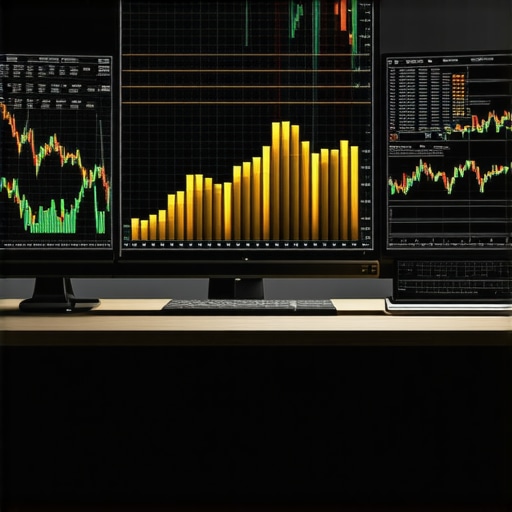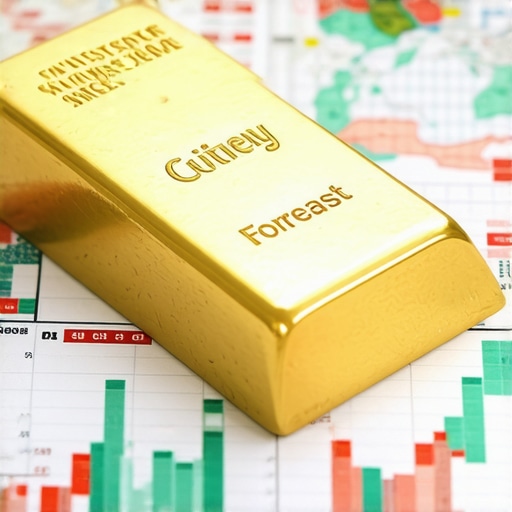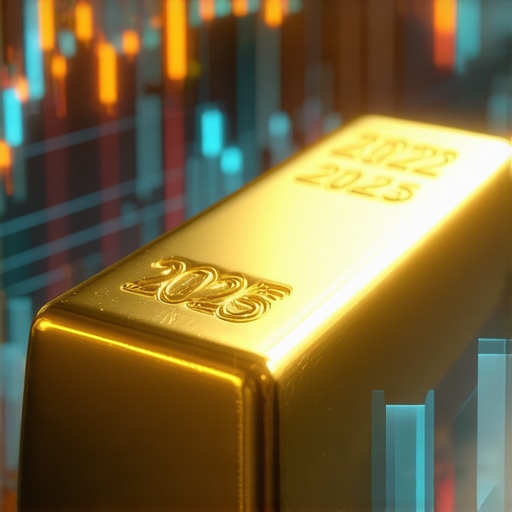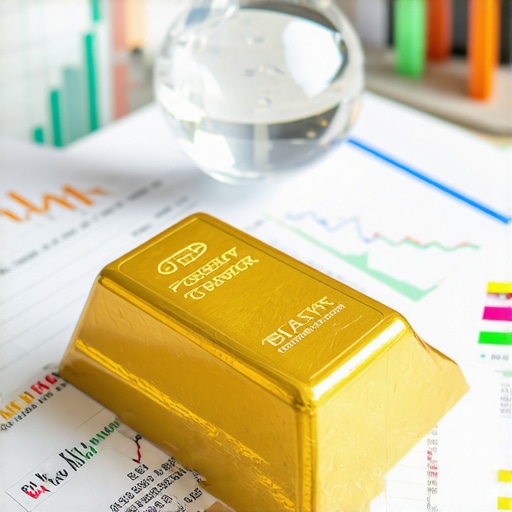Unveiling the Complex Dynamics of Gold Price Trajectories in 2025
As global economic uncertainties persist, understanding the future of gold prices becomes paramount for investors and policymakers alike. Gold, long revered as a safe-haven asset, will continue to respond to a nexus of macroeconomic indicators, geopolitical tensions, and monetary policies in 2025. By examining these factors through an expert lens, we can discern nuanced trends that will shape the gold market in the years ahead.
Key Market Indicators That Will Drive Gold Price Movements
Inflation Trajectories and Real Interest Rates: The Bedrock of Gold Valuation
In 2025, the trajectory of inflation remains a critical determinant of gold prices. A sustained increase in inflationary pressures, coupled with low or negative real interest rates, tends to bolster gold’s appeal as an inflation hedge. According to a recent white paper by the IMF, global inflationary trends will likely remain elevated, exerting upward pressure on gold prices.
U.S. Dollar Dynamics and Gold Correlation
The inverse relationship between the US dollar and gold remains a pivotal market indicator. A weakening dollar, driven by fiscal deficits or monetary easing, tends to elevate gold prices. Conversely, a strong dollar can suppress gold’s allure. Market analysts forecast that in 2025, the dollar’s trajectory will be influenced by Federal Reserve policies and geopolitical developments, further complicating gold’s price forecast.
Expert Predictions and Market Sentiment Analysis
According to a comprehensive market analysis by Buying Gold Now, gold prices could range between $2,000 and $2,500 per ounce in 2025, contingent on inflation rates and central bank policies. Notably, market sentiment remains cautious, with expert consensus emphasizing the importance of diversification and strategic asset allocation.
What are the potential risks that could disrupt these predictions?
Market volatility, unforeseen geopolitical conflicts, or abrupt shifts in monetary policy could cause deviations from predicted trends. Investors must stay vigilant and adopt flexible strategies, leveraging tools like effective trading techniques to navigate these uncertainties.
For those interested in more advanced insights, exploring gold mining stocks and ETFs can diversify exposure and capitalize on sector growth.
As the landscape of the gold market evolves, continuous analysis and adaptation will be essential for maximizing returns and securing wealth. For a deeper dive into expert strategies, consider consulting comprehensive reports from trusted sources like the World Gold Council.
Exploring the Underlying Drivers of Gold Price Fluctuations in 2025
As we delve deeper into the factors influencing gold prices in 2025, it becomes clear that understanding the supply-demand dynamics is crucial. Gold’s demand is driven not only by investment needs but also by industrial applications and jewelry consumption. For instance, emerging markets continue to show rising demand for gold jewelry, which can significantly impact prices. Additionally, the supply side, affected by mining output and central bank sales, plays a pivotal role. Recent reports by the World Gold Council highlight that supply constraints could tighten, further elevating prices if demand remains robust.
How can investors effectively leverage these demand-supply insights to optimize their gold holdings in 2025?
Expert strategies suggest diversifying across different gold investment vehicles, such as physical coins and bars, ETFs, and mining stocks. For instance, physical gold provides wealth security, while ETFs offer liquidity and ease of trading. Moreover, exploring best gold investments for 2025 can help tailor a balanced portfolio aligned with market forecasts. Staying informed through continuous analysis of demand trends and macroeconomic indicators is vital, as these factors often predict short-term price movements.
Challenging Assumptions: Is Gold Always a Safe Haven in 2025?
While gold has traditionally been viewed as a safe-haven asset, recent market volatility and changing investor behaviors raise questions about this status. In certain scenarios, such as a rapid strengthening of the dollar or technological disruptions in gold mining, gold prices could diverge from historical patterns. According to a recent study by Buying Gold Now, investors should consider a holistic approach, integrating gold with other asset classes like stocks and bonds, to weather unpredictable market shifts. This nuanced perspective underscores that gold’s role as a safe haven is context-dependent and dynamic.
What innovative tools or frameworks can investors adopt to navigate the evolving landscape of gold investing in 2025?
Advanced analytical tools like technical analysis, macroeconomic modeling, and market sentiment indicators are invaluable. For example, leveraging futures technical analysis can help predict short-term price swings and inform entry or exit points. Additionally, staying engaged with expert reports and forecasts from authoritative sources such as the World Gold Council enhances decision-making precision. Combining these tools with a disciplined investment plan allows for proactive adjustments amid market volatility.
To deepen your understanding of sophisticated gold strategies, I recommend exploring effective trading techniques that can help you capitalize on market fluctuations while managing risks effectively. Share your thoughts or questions below—what’s your outlook for gold in 2025, and how are you planning to adapt your investment approach? Remember, continuous learning and adaptation are key to thriving in the evolving gold market.
Harnessing Advanced Analytical Frameworks to Decode Gold Market Trends in 2025
As we venture further into 2025, the complexity of gold price movements necessitates a sophisticated understanding of multifaceted market drivers. Beyond basic macroeconomic indicators, investors and analysts are now leveraging cutting-edge models such as stochastic calculus and machine learning algorithms to forecast volatility and identify subtle patterns that traditional analysis might overlook. For instance, the application of GARCH (Generalized Autoregressive Conditional Heteroskedasticity) models allows for dynamic volatility forecasting, which is crucial given gold’s sensitivity to sudden geopolitical shocks or policy shifts. An influential study published in the Journal of Financial Markets highlights how integrating these models enhances predictive accuracy, especially during turbulent periods.
How can integrating macroeconomic and quantitative models improve gold investment strategies?
By synthesizing macroeconomic indicators—such as inflation expectations, currency fluctuations, and interest rate projections—with advanced quantitative models, investors can develop a more resilient framework for decision-making. This hybrid approach facilitates scenario analysis, stress testing, and real-time risk management. For example, combining a Bayesian network for macroeconomic dependency analysis with machine learning-driven price predictions can help investors anticipate abrupt shifts and adjust their holdings proactively. The key lies in continuous model calibration and validation using high-frequency data streams, as emphasized in recent research by the IMF.
The Role of Geopolitical Risk and Monetary Policy in Shaping Gold Prices
While macroeconomic fundamentals set the stage, geopolitical tensions and monetary policy decisions act as catalysts that can dramatically alter the gold landscape. The escalation of regional conflicts or trade disputes often triggers a flight to safety, boosting gold prices unpredictably. Similarly, central banks’ stance on quantitative easing or tightening influences liquidity and interest rates, indirectly affecting gold’s appeal. Notably, the World Gold Council reports that during periods of heightened geopolitical risk, gold’s correlation with traditional safe-haven assets intensifies, underscoring its strategic importance in diversified portfolios.
What are the practical implications of geopolitical and monetary policy shifts for hedge fund strategies?
Hedge funds employing active management strategies utilize real-time geopolitical risk assessments and central bank signals to position their portfolios accordingly. Techniques such as options hedging and tactical asset allocation enable them to capitalize on short-term price swings while mitigating downside risks. Advanced tools like geopolitical risk indices, combined with sentiment analysis of policy speeches and news feeds, provide a granular view that informs tactical trades. For example, a sudden announcement of a new sanctions regime could be preemptively hedged through gold derivatives, minimizing adverse impacts and exploiting potential rallies. For actionable insights, consult resources like the Bloomberg Markets for real-time updates and analysis.
Emerging Technologies and Data-Driven Strategies in Gold Investment
In the realm of high-frequency trading and algorithmic investing, emerging technologies are revolutionizing gold market participation. Blockchain analytics and big data platforms enable granular tracking of supply chain disruptions, mining output, and central bank activities, providing transparency and predictive power. Furthermore, the integration of AI-powered sentiment analysis tools captures market psychology shifts, which often precede price movements. A notable example is the deployment of neural networks trained on social media sentiment, which have demonstrated predictive capabilities during recent market upheavals. These innovations offer a competitive edge for sophisticated investors aiming to optimize timing and risk management.
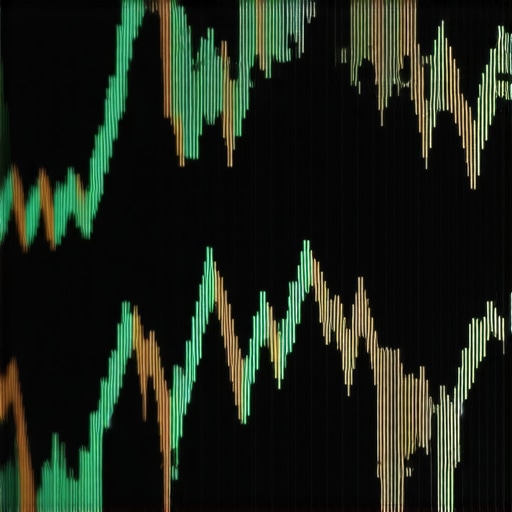
Image prompt: Advanced financial models and data analytics visualization for gold market forecasting, featuring graphs and AI interfaces, high detail.
Deciphering the Intricate Interplay of Gold Market Sentiments in 2025
As we navigate through 2025, understanding the psychological underpinnings influencing gold prices becomes increasingly vital. Market sentiment, driven by geopolitical developments, macroeconomic data, and technological innovations, can precipitate rapid shifts in gold valuations. Advanced sentiment analysis tools leveraging natural language processing (NLP) and big data analytics can detect subtle shifts in investor mood, providing a strategic edge. For instance, tracking social media chatter and news sentiment has proven predictive in recent volatile periods, offering traders a window into impending price movements.
Harnessing Quantitative Finance for Precision in Gold Price Forecasting
How do sophisticated quantitative models enhance gold trading strategies?
Quantitative models like stochastic volatility frameworks, machine learning algorithms, and Bayesian networks allow investors to simulate a myriad of market scenarios and quantify risk with remarkable precision. These models incorporate real-time macroeconomic indicators, supply-demand metrics, and geopolitical risk factors, creating a comprehensive analytical ecosystem. The integration of high-frequency trading data and sentiment indicators further refines these forecasts, enabling proactive portfolio adjustments. A pivotal resource, the IMF’s recent publication, underscores the transformative potential of these methodologies in commodity markets including gold.
Strategic Portfolio Diversification Amid Evolving Market Risks
In an environment marked by volatility and unpredictable geopolitical shocks, diversification remains a cornerstone of resilient investment portfolios. Beyond physical gold and ETFs, exploring emerging asset classes such as gold-linked derivatives, blockchain-backed tokens, and socially responsible mining stocks can diversify risk exposure. For example, gold derivatives can hedge against short-term price swings, while blockchain tokens provide transparency and liquidity. Consulting authoritative sources like the World Gold Council provides invaluable insights into innovative investment vehicles and sector trends.
Evaluating Gold’s Role as a Safe Haven in a Digital Economy
While traditionally heralded as a safeguard during economic downturns, gold’s safety status is increasingly nuanced in the digital age. The rise of digital currencies, central bank digital currencies (CBDCs), and fintech innovations challenge the conventional paradigm. In certain scenarios, technological disruptions or regulatory shifts can decouple gold’s safe-haven status from its historical patterns. Recent research from the Buying Gold Now emphasizes the importance of a diversified approach that includes digital assets and traditional commodities, tailored to evolving risk landscapes.
What cutting-edge tools are available for investors seeking to adapt to this digital transformation?
Innovative tools such as AI-driven portfolio optimization platforms, blockchain analytics, and real-time geopolitical risk dashboards empower investors to adapt swiftly. For example, AI algorithms that analyze social media trends and news feeds can anticipate market shifts before conventional indicators respond. Blockchain analytics facilitate transparent tracking of gold supply chains, verifying authenticity and ethical sourcing. To harness these advancements, investors should consider platforms like Bloomberg Markets and specialized fintech solutions that integrate these technologies into actionable insights.
Engage with these sophisticated strategies now to elevate your gold investment approach—deepening your expertise and securing a competitive advantage in 2025’s dynamic market environment.
Integrating Multi-Model Approaches for Robust Gold Market Predictions
Combining macroeconomic data, machine learning forecasts, and geopolitical risk assessments facilitates a multi-layered analytical framework capable of capturing complex market signals. For instance, the application of neural networks trained on high-frequency data and sentiment indices enhances short-term predictive accuracy. The Journal of Financial Markets underscores the success of such hybrid models during periods of heightened uncertainty. This integrated approach ensures investors are better equipped to navigate the unpredictable landscape of gold pricing in 2025.
The Future of Gold in a Rapidly Changing Economic and Political Climate
Looking ahead, the role of gold will be shaped by an intricate web of technological innovations, evolving geopolitical tensions, and macroeconomic policies. The adoption of blockchain for gold trading, the influence of CBDCs, and the proliferation of AI-driven market analytics are redefining investment paradigms. Stakeholders must stay abreast of these developments, leveraging cutting-edge tools and comprehensive research to maintain resilience and capitalize on emerging opportunities.
Expert Insights & Advanced Considerations
1. Leveraging Cutting-Edge Quantitative Models
Integrating machine learning algorithms and stochastic calculus enhances predictive accuracy for gold price movements, especially during turbulent periods, by capturing complex market signals that traditional analysis might overlook.
2. Monitoring Geopolitical and Monetary Policy Dynamics
Active assessment of geopolitical risks and central bank policies allows investors to proactively adjust positions, utilizing tools like geopolitical risk indices and sentiment analysis to anticipate sharp market shifts.
3. Diversifying with Innovative Gold Investment Vehicles
Exploring emerging assets such as blockchain-backed tokens, gold derivatives, and socially responsible mining stocks offers diversification benefits and hedges against traditional market risks, fostering resilience in investment portfolios.
4. Harnessing Advanced Data Analytics and Blockchain Technologies
Employing AI-driven sentiment analysis and blockchain analytics provides transparency, real-time insights, and predictive power, enabling sophisticated investors to optimize timing and mitigate risks more effectively.
Curated Expert Resources
- World Gold Council: Offers comprehensive research, sector reports, and market analysis, serving as an authoritative resource for understanding global gold demand-supply dynamics.
- IMF Publications: Provides macroeconomic forecasts and analysis on inflation, interest rates, and financial stability, essential for informed decision-making in gold investing.
- Bloomberg Markets: Delivers real-time market data, geopolitical updates, and expert commentary, crucial for tactical asset allocation and risk management.
- Journal of Financial Markets: Features scholarly articles on volatility modeling, market prediction techniques, and quantitative analysis relevant to gold price forecasting.
- Buying Gold Now: A trusted platform offering strategic insights, trading techniques, and sector-specific forecasts for high-level investors seeking to optimize their gold holdings in 2025.
Final Expert Perspective
In navigating the complexities of gold prices in 2025, mastering advanced analytical frameworks and staying abreast of geopolitical and macroeconomic shifts are paramount. The integration of quantitative models, real-time data analytics, and diversified investment vehicles positions sophisticated investors to capitalize on emerging opportunities while managing risks effectively. For those committed to deepening their expertise, engaging with authoritative resources like the World Gold Council and leveraging cutting-edge tools can significantly enhance strategic outcomes. As market dynamics evolve, continuous learning and adaptive strategies will remain the cornerstone of successful gold investment. I invite you to explore these resources, share your insights, and stay ahead in this intricate and rewarding landscape.






